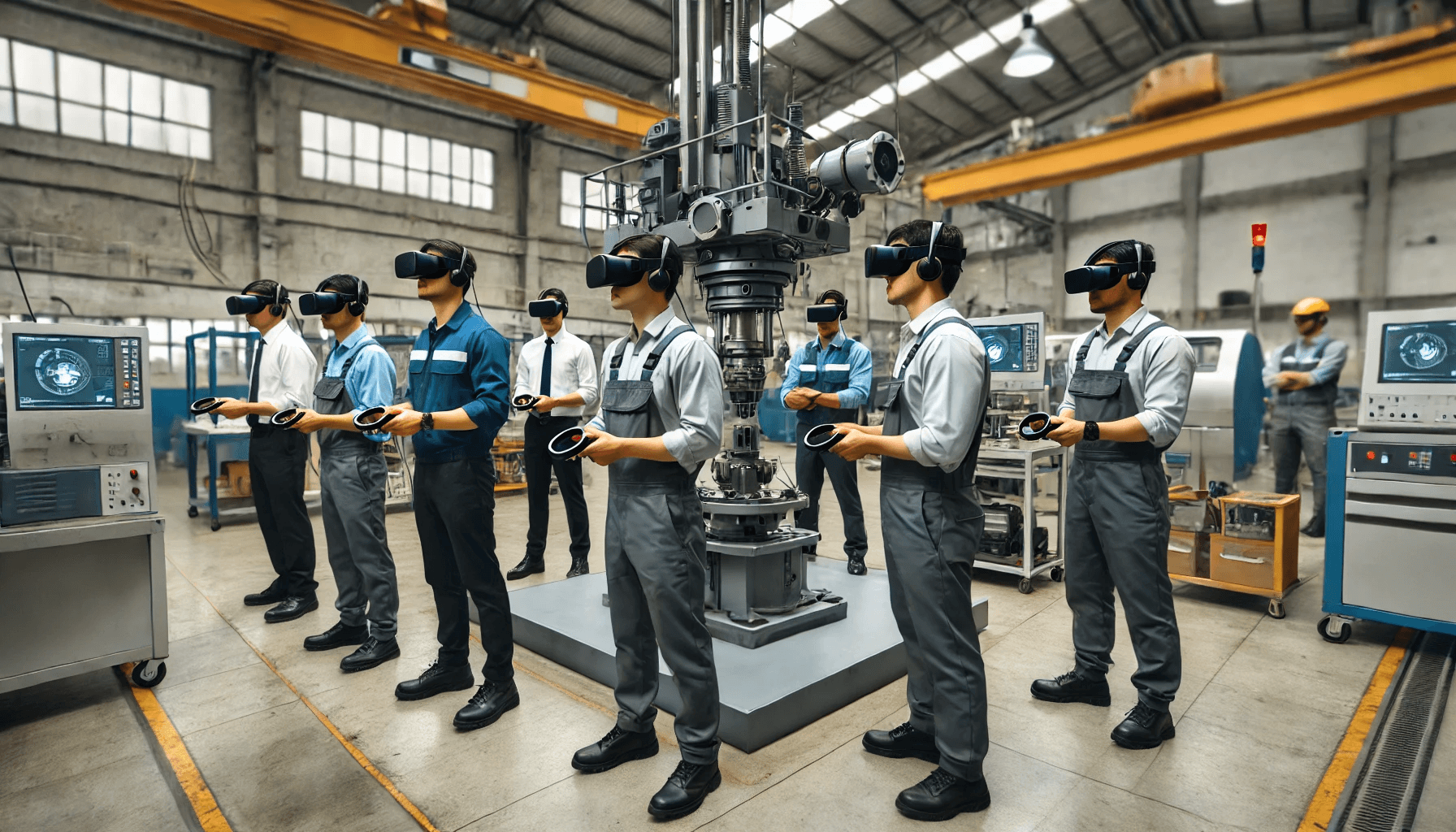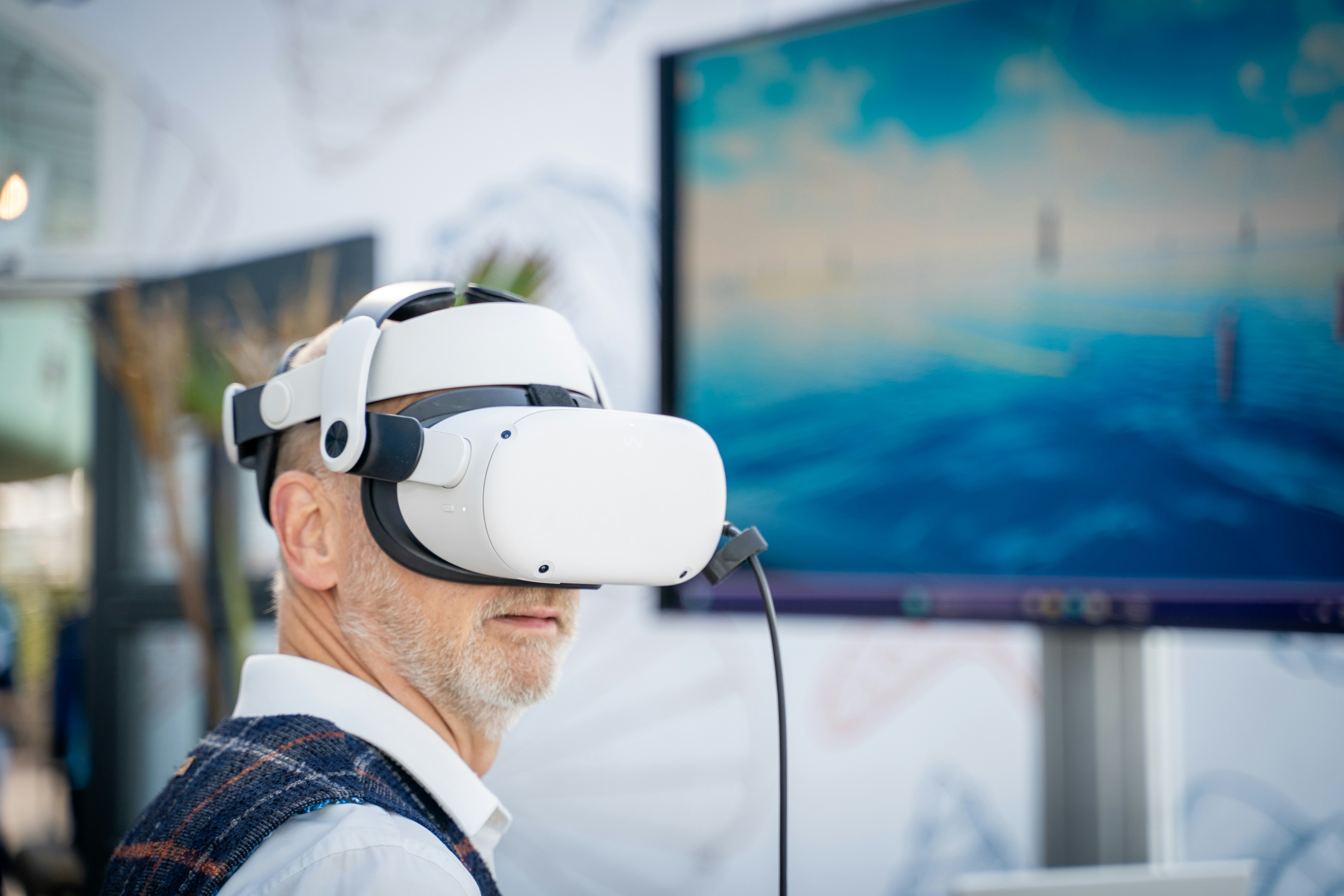Now that you have read about the different benefits of VR safety training, let’s turn our attention to the next logical step: implementation.
Below is a step-by-step account of the process from start to finish. Even though this is not an exhaustive account, it is still a good primer to start with.
Assess Organizational Readiness
The first step in the entire pipeline is to assess how ready your organization is to implement VR training.
There are a few things you can take into account to gain a complete picture of this:
Gather Data
Gather data about how knowledgeable the different personnel in your organisation are about VR safety training. Such internal research will help you understand some of the challenges that lie ahead of you in the implementation, and the scale of these challenges.
Find out areas where you may find resistance. For instance, if your internal stakeholders are unaware of the potential of VR safety training, then you may meet with resistance. So, you might need to find and implement mitigation strategies that ease said resistance.
Assess Existing Systems
You may already have internal systems or technologies that you’ve been using. Some of these might even be vital to your organisation’s various operations.
In such cases, it is important that the VR safety training modules you implement be compatible with these systems. You might have to consider if these modules can seamlessly integrate with the said systems.
For instance, suppose your organization has a Learning Management System (LMS) that you use to track the learning progress of workers. It is then imperative that the VR safety training modules you create sync training data with the LMS you are using, with no issues whatsoever.
Identify Safety Champions
You can select the most tech-savvy people from your worker base and assign them the title and responsibility of being safety champions.
Safety champions are individuals who help their peers use VR equipment and safety training modules. These individuals ensure the training remains effective, by ensuring the fellow employees feel comfortable using the technology.
Champions can also be pivotal in the creation of a safety-first culture. The individuals can advocate for better safety initiatives and take ownership of such initiatives in critical situations.
Plan for Hardware and Infrastructure
The next step involves planning for the hardware and infrastructure to be used for VR safety training.
The first thing to consider is to plan for scalability. You have to not only estimate the current content requirements but also anticipate future requirements.
If you consider this, then a phased approach to hardware acquisition seems like the logical step rather than going all in. For instance, you can commence the VR safety training program in your organization with a few headsets initially, and then eventually scale up to the ideal number required to train your desired workforce.
Besides this, there are numerous other things to consider as well:
Headset Selection:
You have to select the appropriate headset for your VR safety training to be a success. For example, if you select a model that is outdated, it might hamper your overall training initiatives.
Even though there are aspects to consider such as them being tethered or untethered, the most important consideration is the budget. Are the headsets for the number of units you want them, going to fit in your overall budget?
Bandwidth Requirements
The next step is to understand the capabilities of your network. Can your network handle the bandwidth requirements of the VR safety training modules you are about to implement?
To gain, a better understanding of this, you’ll have to collaborate with your VR vendor. The vendor would be able to educate you on the amount of data transmitted to and from the module over a while.
Besides, the need to run the modules seamlessly, the bandwidth is also needed to eliminate motion sickness. Low latency can lead to motion sickness in a lot of people. So, if the VR safety training solution is being run on the cloud, maintaining a high latency remains imperative.
Whitelisting of Services
You should also ensure that the right services required to run the modules are whitelisted. A lot of organizations maintain strict security measures and blacklist certain services. If these services are necessary to run the VR module, then you should whitelist them without compromising security.
Physical Space
Just as important is the physical space. You should determine how much space is required for the implementation of the VR module based on a myriad of factors. If possible, you can even dedicate a separate room just for the VR safety training.
Design and Develop VR Safety Modules
The next step in the overall process is to decide what to create. Meaning, you have to define the modules that you have to create.
There are several methods you can use to do this. One is to consult with safety managers and subject matter experts (SMEs) to identify what safety skills and knowledge should be turned into VR safety modules.
Alternatively, you can also consult incident reports. This will let you identify high-risk areas that are the most important.
Like, in the case of our project for JSW. For the project, conveyor belts were identified as the priority after looking at the incident reports from the plant. Thus, conveyor-belt module was chosen to be the first module to be developed
For the design and art of the VR modules, there are certain aspects you must consider.
The first is that you must set clear and measurable outcomes for each of the modules. This includes the outlining of the information that the trainee must retain in their mind once they have finished the module. This is especially important considering the potential for VR to initiate real-world change.
The second is to replicate the actual workspaces the trainees are going to be a part of. Because familiarity leads to better retention. This is because the human memory is tied to specific cues that recall the memory in relation to the cue. In this instance, the cue is the learning environment itself.
As for the content creation aspect, you have two options in front of you:
Use a Top VR Creation Platform
You can opt for a VR creation platform that is tailored towards the creation of VR experiences including VR safety training modules. These platforms quicken the process and also lets you maintain the highest industry standards.
For instance, VRseBuilder features a drag-and-drop interface that lets you create VR safety training modules quickly. The creation platform also features a pre-built library of assets that can be plugged into VR training experiences.
Opt For Off-the-Shelf Bundles
Off-the-shelf bundles are pre-created bundles that are based on common safety procedures. You can customize them based on your preferred branding. You can even integrate custom environments into them to increase the familiarity of the trainees towards the VR safety training modules.
Ensure Compliance
Numerous industries have their own specific regulations. Then, there are the company-specific rules that organizations follow. It is imperative that both of them be reflected in the VR safety training module you create.
In addition to these, there are also data protection regulations such as the GDPR. You have to adhere to them as well.
If required, create a compliance checklist. Assess all of the modules based on this checklist. You may even consider the future updates you make in accordance with this checklist.
Evaluate Training Effectiveness
Even if you create a module following all these steps, all would be in vain if it isn’t effective. Now how do you measure the effectiveness?
Metrics.
First, you have to determine specific KPIs, These could be safety-specific (like reduction in workplace incidents or improvement in safety audit scores) or learning-specific (like knowledge retention scores or time-to-competency rates.)
Second, you should have a centralized system that collects all the data about your training, down to the granular level.
Like, the VRseBuilder’s web-based dashboard that gives you an overview of the entire VR training metrics you choose.
In addition, you can conduct A/B testing, segmenting your user base into two parts and serving each of them a variant with a single variable changed. Repeated A/B testing will enable you to further tweak the VR safety training experience.
You can also gain insights through advanced data analysis on the data available. It will further reveal bottlenecks and problems, allowing you to rectify them in a short time.
Conclusion
Employee health and safety shouldn’t be an afterthought. Because the numerous benefits far outweigh the costs.
Now, thanks to VR safety training, the transformation of safety in your organisation has never been more easier. You now have a solution that is not just backed by instincts and experience, but also by science.



